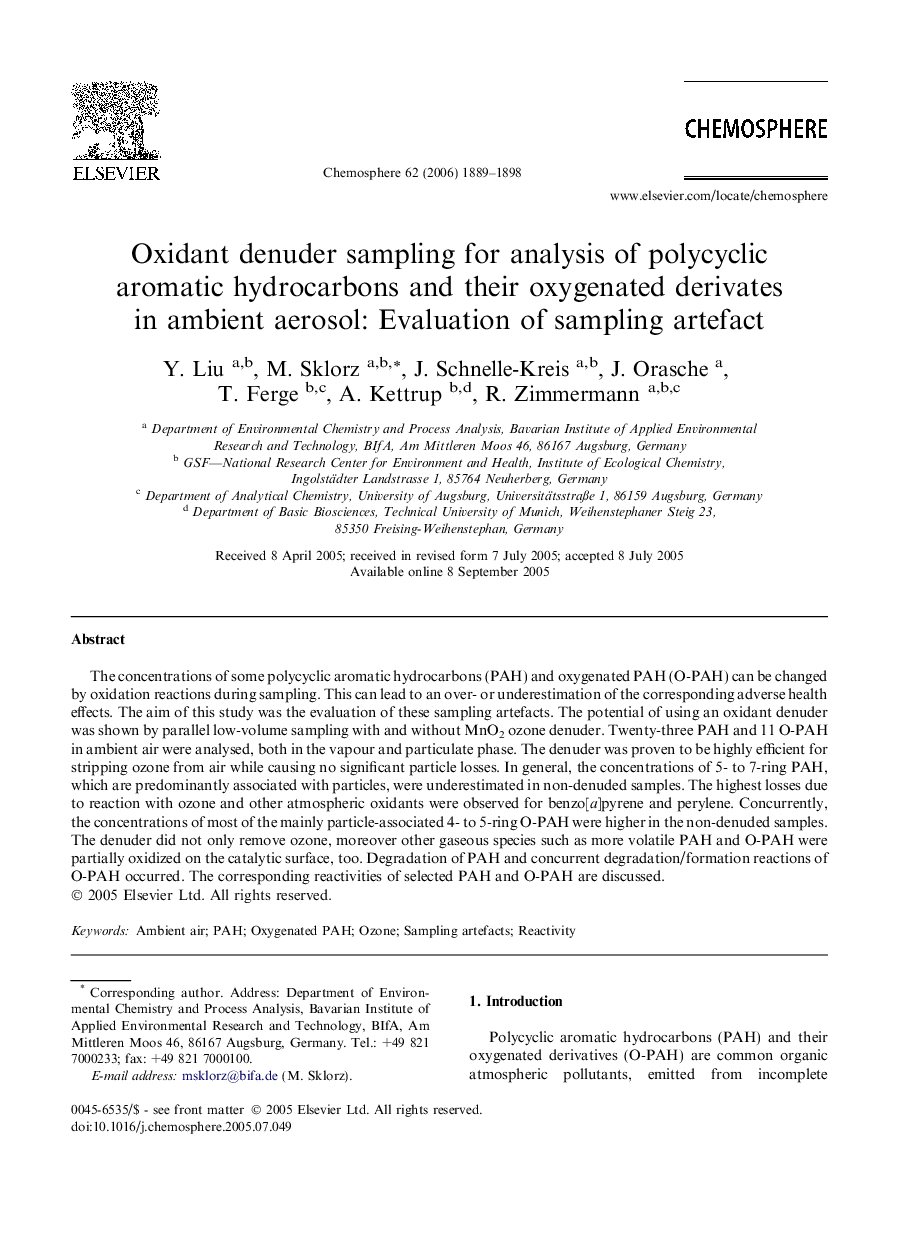| Article ID | Journal | Published Year | Pages | File Type |
|---|---|---|---|---|
| 4416975 | Chemosphere | 2006 | 10 Pages |
The concentrations of some polycyclic aromatic hydrocarbons (PAH) and oxygenated PAH (O-PAH) can be changed by oxidation reactions during sampling. This can lead to an over- or underestimation of the corresponding adverse health effects. The aim of this study was the evaluation of these sampling artefacts. The potential of using an oxidant denuder was shown by parallel low-volume sampling with and without MnO2 ozone denuder. Twenty-three PAH and 11 O-PAH in ambient air were analysed, both in the vapour and particulate phase. The denuder was proven to be highly efficient for stripping ozone from air while causing no significant particle losses. In general, the concentrations of 5- to 7-ring PAH, which are predominantly associated with particles, were underestimated in non-denuded samples. The highest losses due to reaction with ozone and other atmospheric oxidants were observed for benzo[a]pyrene and perylene. Concurrently, the concentrations of most of the mainly particle-associated 4- to 5-ring O-PAH were higher in the non-denuded samples. The denuder did not only remove ozone, moreover other gaseous species such as more volatile PAH and O-PAH were partially oxidized on the catalytic surface, too. Degradation of PAH and concurrent degradation/formation reactions of O-PAH occurred. The corresponding reactivities of selected PAH and O-PAH are discussed.
